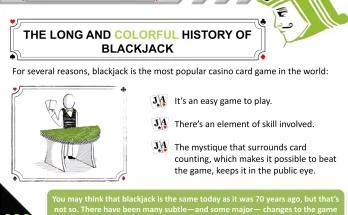Blackjack Card Strategies
Blackjack is probably the most popular casino gambling card game in the entire world. The game is usually played on tables of 52 cards and also is an American cousin of the world’s most popular gambling card game called Twenty-One. This multi-player gambling game is a derivative of the Portuguese eight-suit card game “Tricos” and the Chinese four-suit card game “Yuan Qi”. This family of gambling card games has also included the British game of Poker and the European game of Vingt-et-Un. There are literally countless variations of these games all over the world as well as some in the Caribbean and the Asian cultures.
Blackjack is usually played by two people in a table who sit opposite each other, either face to face or via a television screen. The dealer then deals out seven cards to be dealt one at a time to each player face up. When this is done, the dealer will then reveal the cards one at a time and asks if any of them can be bet. Any player can then call the dealer and have the cards dealt from the deck once more. This is called “going through the deck” and is what most players are familiar with when they hear about blackjack.
If you are playing blackjack and are a beginner, you will probably call before you have your cards dealt. This is a common mistake for new players to make and one that will cost them a lot of money if they are not careful. You should never call or raise when the dealer reveals the cards, unless you have an immediate need to do so (such as calling a top pair or full house). When the dealer reveals the cards after you have called, you should then fold, rather than raising. This is because you can still win money with a raise but you lose so much more when you fold. Because there are always pairs and threes in blackjack and some decks will always be dominated by one of these types of cards, you should try to stick with the more popular cards and never go for the occasional royal or joker combination.
To help you learn how to play blackjack, it is best to memorize the number combination that the dealer will come out with before he/she deals you out. Some players look at the top card and immediately know what the next card will be but many others are more haphazard and will deal the dealer out a random set of cards, regardless of the order they are in. If a player is looking at aces and does not know what the next card is they will naturally assume it will be either an a or an e, but this is not the case.
In most cases in a blackjack game, it is usually better to deal the cards out face-up. This is because when a player looks at a card on the table they have to look at it from either the front or the back, depending on which way the dealer is facing them. When dealing with the dealer from the front, a player has to look directly at them and determine if the card they are looking at is in their hand or an opponent’s hand. The advantage of dealing face-up cards is that the dealer can still see if an opponent is bluffing. If the dealer is folding, he/she may place one of his/her hands face down indicating that they are bluffing and giving away some valuable chips.
On the other hand, when a player is dealt a hand, whether it is full-face-up or not, they have only dealt two cards – a top card and two cards – face up. These two cards are the basics of the deal and can be used to make any kind of bluffing play imaginable. For instance, the player can choose to either keep playing and raising the pot until they have raised it to four stars and then call (quit) or they can use the two cards from the top to bet out to put the opponent in a position to force a flush.




